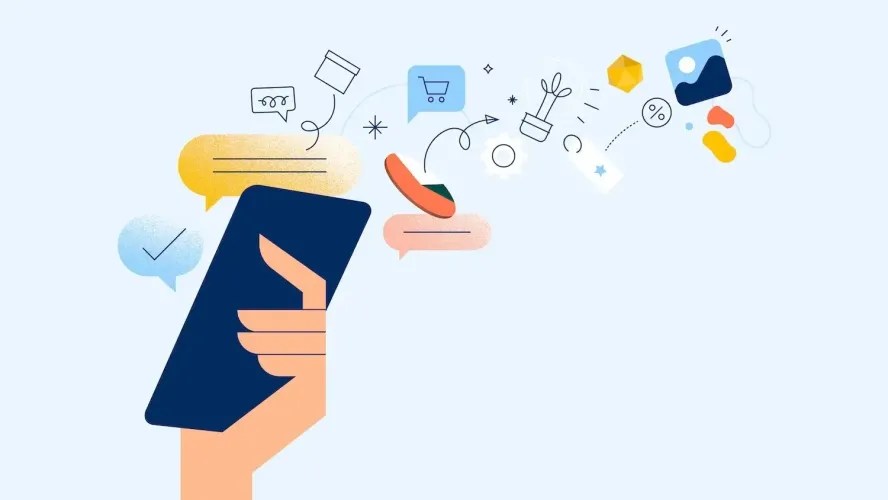How the Flywheel Will Make You a Better Marketer



There’s a new marketing framework in town: the flywheel picks up where the funnel leaves off, putting the customer view in the centre where it belongs and creating a fresh new picture of the customer journey.
Salesforce Staff
There’s a new marketing framework in town: the flywheel picks up where the funnel leaves off, putting the customer view in the centre where it belongs and creating a fresh new picture of the customer journey.
Even for the marketers who have mastered it, the funnel might be starting to feel a little top-heavy by now.
No matter the industry you work in, the size of your organisation or the nature of your products and services, the use of a sales funnel to organise marketing activities has been largely the same. Start wide with content that drives awareness, then try to sway prospects to see the benefits of your business in the consideration phase, and drive them to a closed deal in the conversion phase.
As smooth and effective as that one-way journey might seem, however, a more recent concept dubbed the ‘flywheel’ might prove even better. In mechanical engineering, a flywheel is a device that helps to store energy — in this case, the flywheel places customer data at the centre and directs the energy of your tactics to the right place: your audience.
At first, the key elements of the flywheel will look pretty familiar to marketers. Picture three concentric circles — one inside the other. On the outer ring are words describing your target audience at various stages: strangers, prospects, customers and ambassadors.
The next ring in offers a breakdown of marketing content based on your intention: attract, engage and delight. In other words, you still need to lead people from one stage of a purchase to the other. Rather than see this as a process that leads to a finite end, however, the flywheel reimagines the customer journey by depicting it as a continuous circle. This reinforces the power of collecting and managing data at every stage of your relationship with customers. The final ring, inside the other two, contains the words ‘marketing’, ‘sales’ and ‘service’ with CRM in the very centre.
As you study the flywheel a little more closely, here are some other things you should notice and prepare for as you put it into action.
The flywheel creates communities of customers
The funnel approach was narrowly focused on how a marketing organisation would go after one customer at a time, nurturing them with the most relevant message along the way.
As some of the most successful companies have realised, however, the best marketing and sales programs not only convert strangers into customers, but turn customers into ambassadors who can then attract others into the fold. In other words, your efforts should not simply be about trying to gather a set of discrete sales leads, but to build connections between the buyers who have already come to see value in their relationship with you, and all the other companies like them.
Going back to the outer rim of the flywheel, for example, ‘strangers’ and then ‘prospects’ line up over the ‘attract’ area underneath. The same kind of content we’ve referred to as ‘top of funnel’ might need to offer them a broad education to compel them towards a purchase, but things get even more interesting once the sale happens.
The word ‘customers,’ for instance, leads straight into ‘promoters.’ This means that the best customers not only continue to do business with you, but become advocates for your products and services to their peers.
How does this work in practice? It could be as simple as adding a step in your customer success process where, after a certain point when a customer has achieved return on investment for their purchase, they receive a request to collaborate on a case study. You could also invite them to speak at an industry event, host a webinar or film a video showcasing the success they’ve been able to achieve because of their partnership with you.
The flywheel enables delight at every step
The traditional marketing and sales funnel is almost like a blueprint to achieve a specific end: get money in the door by winning more deals. There’s nothing wrong with that, but it doesn’t really speak to the overall customer experience, which is what truly sets leading brands apart from those that struggle to grow.
Let’s revisit the stages included in the next ring of the flywheel. Notice how different the word ‘attract’ is from ‘awareness,’ and how ‘engage’ suggests something other than simply driving ‘consideration’ and ‘conversion.’ The flywheel directs the content you’re creating here, encouraging a focus on developing a positive, empowering relationship with buyers (long before they even become a buyer). This is not about tactics to manipulate people, but a way to offer a thoughtful, genuine approach that helps them address their problems or pain points.
The third area, ‘delight,’ is placed directly over the ‘sales’ and ‘service’ parts of the journey. This is deliberate. Rather than merely hoping customers will be satisfied once they’ve agreed to become a customer, the flywheel urges organisations to build happiness into every step — from actually handing over their money to all the support they may require afterwards. This is a feel-good mentality that forces organisations to constantly think about how they can go above and beyond.
The flywheel connects sales, marketing and service
Although both sales and marketing departments can probably see their role in working with customers as they journey through the funnel, customer service teams may have felt a little left out. The flywheel addresses that gap with the inner ring, where sales, marketing and service are a closed loop.
Remember, too, that inside this ring sits the CRM. Going back to the mechanical engineering analogy — where the flywheel stores energy — CRM stores the customer data that fuels everything sales reps, marketers and service agents do, and the result is far more powerful when they do it in a cohesive way.
Where to next?
Of course, marketing departments may not be ready to abandon the funnel entirely, or at least not right away. There are steps you can take to make this shift easier, however.
Start by looking at the customer journey maps you’ve developed to date. How well do they align with the approach the flywheel is suggesting?
Next, evaluate the handoffs and collaboration that’s typical across your sales, marketing and service teams. Where can these connections be strengthened or solidified?
Finally, can you truly say that CRM data is at the centre of everything you do? If not, how can you harness the information you receive from customers from the moment you first notice them to the time they become loyal fans?
All frameworks have their pluses and minuses, and success is a matter of how you implement them. There’s enough good stuff in the flywheel, however, that this is the time for organisations to get rolling.




















